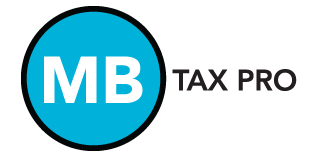
As last-minute filers rush to get their returns (or extensions) in by the due date, tax is the topic of conversation today. But who wants to talk about line 21 or Modified Accelerated Cost Recovery System depreciation all day? To take you easily from the water cooler to cocktail hour, here are nine fun tax facts for April 15:
- The federal form 1040 was introduced in 1913 and was required of US citizens and residents with a net income of $3,000 or over for the taxable year; nonresident aliens with income were also required to file. It looked a lot different from the form 1040 we know today -- just three pages long (plus instructions). You can check it out here.
- The Social Security Act was signed into law by President Franklin D. Roosevelt in 1935, and Social Security numbers were made available the next year, 1936. However, taxpayers weren't required to use their Social Security number as a means of tax form identification until 1961.
- The IRS reported receiving 131,543,000 individual income tax returns in 2009. If each return were processed at the rate of one per minute (and that's fast!), it would take more than 250 years for one person to do the job.
- The cost of war has often driven the push for taxes. The first United States income tax was imposed in July 1861 to help pay for the Civil War; the rate was just 3% of income over $800. That tax was eventually repealed and replaced by a tiered income tax in 1862. The income tax system we use today was made law in 1913, just before the start of World War I.
- Federal income tax withholding as we know it today was made permanent in 1943 as part of the Current Tax Payment Act. The move was seen as a means of making tax payments and filings more convenient for taxpayers. At the time, US Treasury official Randolph Paul reported to Congress that "[t]he tax has been broadened to reach many millions of additional taxpayers with small incomes and little experience in planning their finances to meet large bills at infrequent intervals ... A suitable pay-as-you-go method will be of great assistance to millions of persons."
- The "Presidential Campaign Fund" check-box was created in the 1970s in order to fund presidential elections. Since the inception of the check-off, over a billion dollars has been distributed to about a hundred primary election presidential candidates. Since 1976, almost 90% of candidates have accepted funds for the primary election (then-Governor George Bush opted out in 2000) and all major party nominees -- except one -- accepted public funds in the general election. That exception? Barack Obama.
- There are at least 480 forms on the IRS Web site. Together with instructions and schedules, you can download 1,132 tax-form related files from irs.gov. Instructions range from form to form, with the instructions for the form 1040 taking up a whopping 101 pages (plus index).
- In 2007, the IRS reported that 99,316,995 taxpayers were assisted by writing, calling, or walking into an IRS office. Statistically, that works out to one in three Americans -- or nearly three times the population of California.
- Regarded by some as the smartest man who ever lived, even Albert Einstein was no fan of figuring out his taxes, once remarking, "The hardest thing in the world to understand is the income tax."

